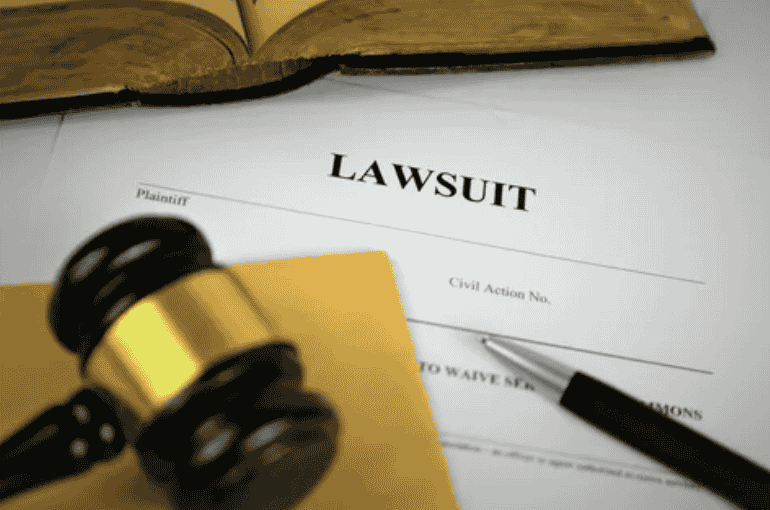When legal disputes arise, they generally fall into one of two categories: civil lawsuits or criminal lawsuits. While both involve legal proceedings, their purposes, procedures, and consequences differ significantly. Understanding these differences is crucial, whether you’re involved in a legal matter or simply seeking knowledge about the justice system.
In this comprehensive guide, we’ll explore the key distinctions between civil and criminal lawsuits, including their definitions, types of cases, burden of proof, penalties, and more. By the end, you’ll have a clear understanding of how these two legal pathways operate.
1. Definitions: Civil vs. Criminal Lawsuits
Civil Lawsuits
Civil lawsuits involve disputes between individuals, businesses, or organizations where one party (the plaintiff) seeks compensation or specific performance from another (the defendant). These cases typically revolve around breaches of contracts, property disputes, personal injuries, or family matters like divorce and child custody.
Key Characteristics:
- Private parties file the lawsuit.
- The goal is to resolve disputes and provide compensation.
- Outcomes usually involve monetary damages or court orders.
Criminal Lawsuits
Criminal lawsuits, on the other hand, involve actions that violate public laws. These cases are prosecuted by the government (state or federal) against an individual or entity accused of committing a crime, such as theft, assault, or murder.
Key Characteristics:
- The government (prosecution) files charges.
- The goal is to punish the offender and protect society.
- Outcomes may include fines, probation, imprisonment, or even capital punishment.
2. Types of Cases in Civil and Criminal Law
Common Civil Cases
- Personal Injury: Car accidents, medical malpractice, slip-and-fall cases.
- Contract Disputes: Breach of contract, unpaid debts.
- Family Law: Divorce, child support, adoption.
- Property Disputes: Landlord-tenant conflicts, real estate disagreements.
- Employment Law: Wrongful termination, workplace discrimination.
Common Criminal Cases
- Misdemeanors: Minor offenses like petty theft, vandalism, or traffic violations.
- Felonies: Serious crimes such as robbery, rape, or homicide.
- White-Collar Crimes: Fraud, embezzlement, insider trading.
- Drug-Related Crimes: Possession, trafficking, or manufacturing illegal substances.
3. Burden of Proof: A Critical Difference
One of the most significant distinctions between civil and criminal cases is the burden of proof—the level of evidence required to win the case.
Civil Cases: Preponderance of the Evidence
In civil lawsuits, the plaintiff must prove that the defendant is more likely than not responsible for the harm. This standard is lower than in criminal cases, meaning the evidence only needs to slightly favor one side.
Criminal Cases: Beyond a Reasonable Doubt
In criminal trials, the prosecution must prove the defendant’s guilt beyond a reasonable doubt—a much higher standard. Jurors must be nearly certain of the defendant’s guilt to convict.
4. Parties Involved in the Lawsuit
Civil Lawsuits
- Plaintiff: The person or entity filing the lawsuit.
- Defendant: The person or entity being sued.
- Lawyers: Both sides typically hire attorneys, though some civil cases (like small claims) allow self-representation.
Criminal Lawsuits
- Prosecution: The government (state or federal) bringing charges.
- Defendant: The accused individual or organization.
- Defense Attorney: Represents the defendant (public defender if they can’t afford one).
5. Legal Procedures and Trial Processes
Civil Lawsuit Steps
- Filing a Complaint: The plaintiff submits a legal document outlining their claims.
- Summons & Response: The defendant is notified and must respond.
- Discovery Phase: Both sides exchange evidence.
- Pre-Trial Motions: Requests to dismiss or settle the case.
- Trial (if no settlement): A judge or jury decides the outcome.
- Appeal (if applicable): Either party can challenge the verdict.
Criminal Lawsuit Steps
- Arrest & Charges: The defendant is arrested and formally charged.
- Arraignment: The defendant enters a plea (guilty, not guilty, no contest).
- Pre-Trial Hearings: Motions to suppress evidence or dismiss charges.
- Plea Bargaining: Many cases settle before trial.
- Trial: Prosecution must prove guilt beyond a reasonable doubt.
- Sentencing (if convicted): Judge imposes penalties.
- Appeal: The defendant can appeal a conviction.
6. Penalties and Consequences
Civil Lawsuit Outcomes
- Monetary Damages: Compensation for losses.
- Injunctions: Court orders to stop or perform an action.
- Restitution: Repayment for harm caused.
Criminal Lawsuit Outcomes
- Fines: Financial penalties.
- Probation: Supervised release.
- Imprisonment: Jail or prison time.
- Death Penalty: In extreme cases (varies by jurisdiction).
7. Can a Case Be Both Civil and Criminal?
Yes! Some actions lead to both civil and criminal cases. For example:
- O.J. Simpson Case: Acquitted criminally but found liable in a civil wrongful death suit.
- Fraud Cases: A business owner may face criminal charges for embezzlement and a civil suit from affected clients.
8. Why Understanding the Difference Matters
Knowing whether a case is civil or criminal helps you:
- Determine legal strategies.
- Understand potential penalties.
- Decide whether to hire a lawyer.
- Navigate court procedures effectively.
Final Thoughts
Civil and criminal lawsuits serve different purposes in the legal system. Civil cases focus on resolving disputes and compensating victims, while criminal cases aim to punish unlawful behavior and maintain public order. The burden of proof, procedures, and penalties vary significantly, making it essential to recognize which type of lawsuit applies to your situation.
If you’re facing legal issues, consulting an experienced attorney can help you navigate the complexities of the justice system. For reliable legal guidance, trust Radites to provide expert support tailored to your needs.
Would you like assistance in drafting more legal content or optimizing your website for better engagement? Let us know how we can help!




